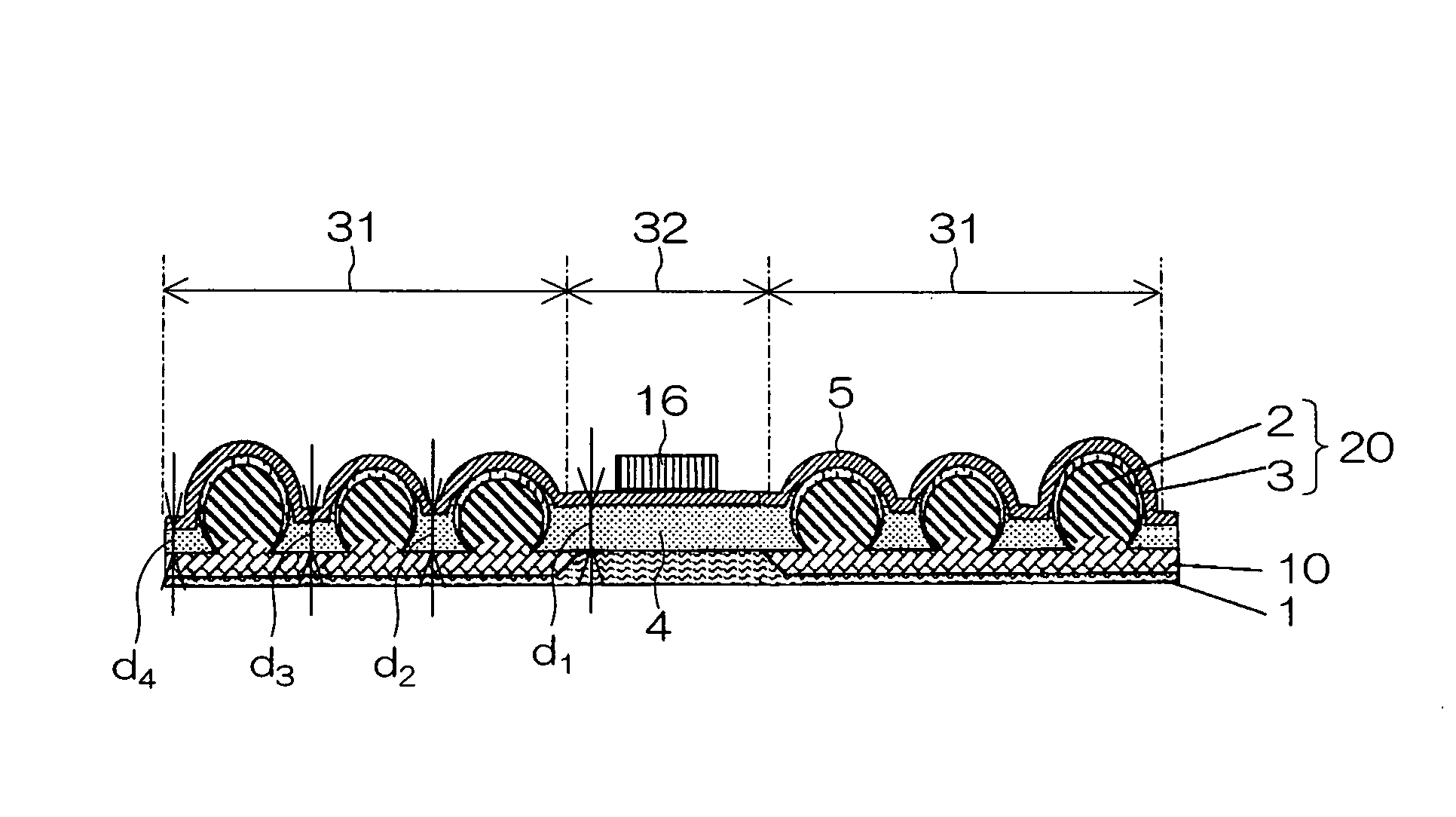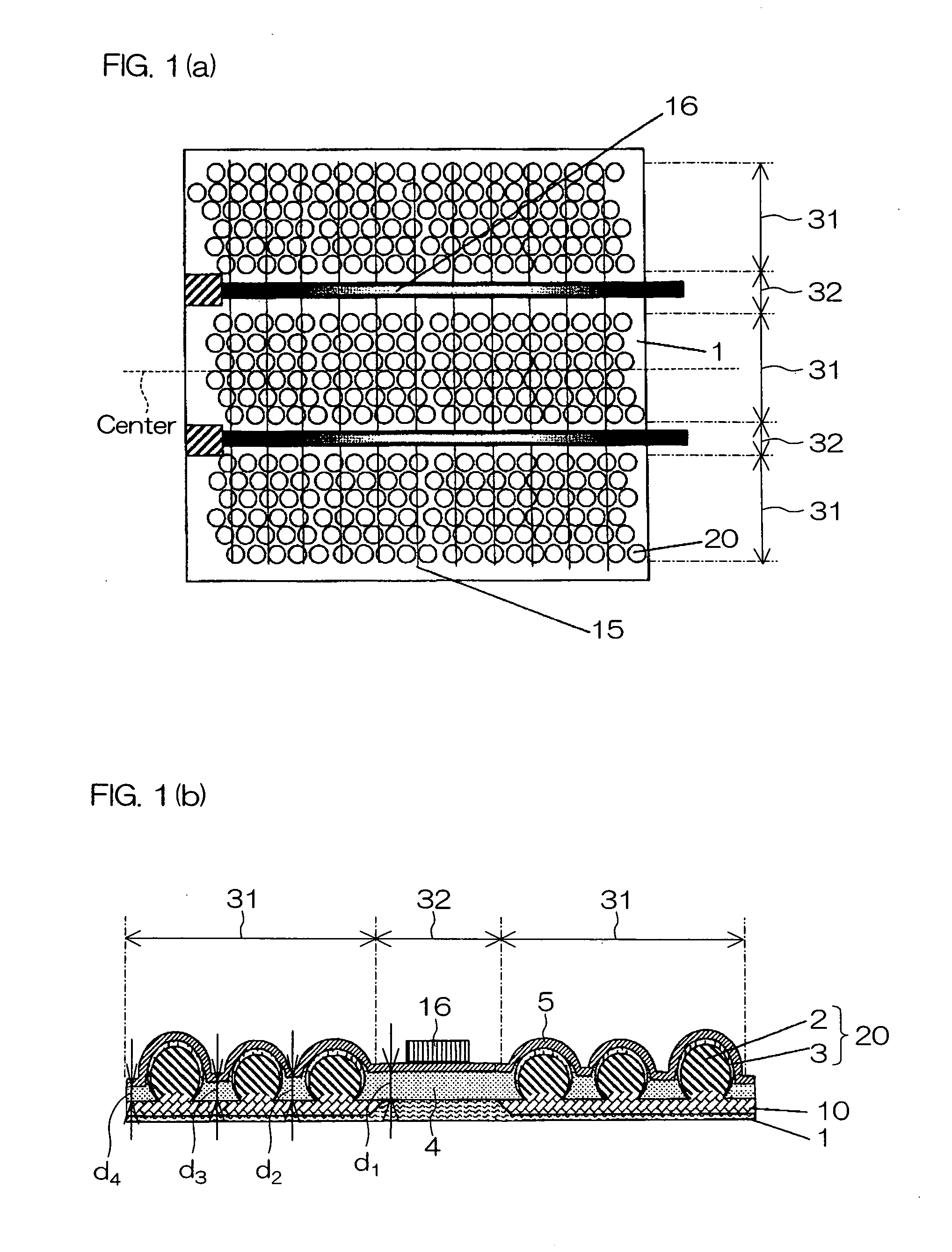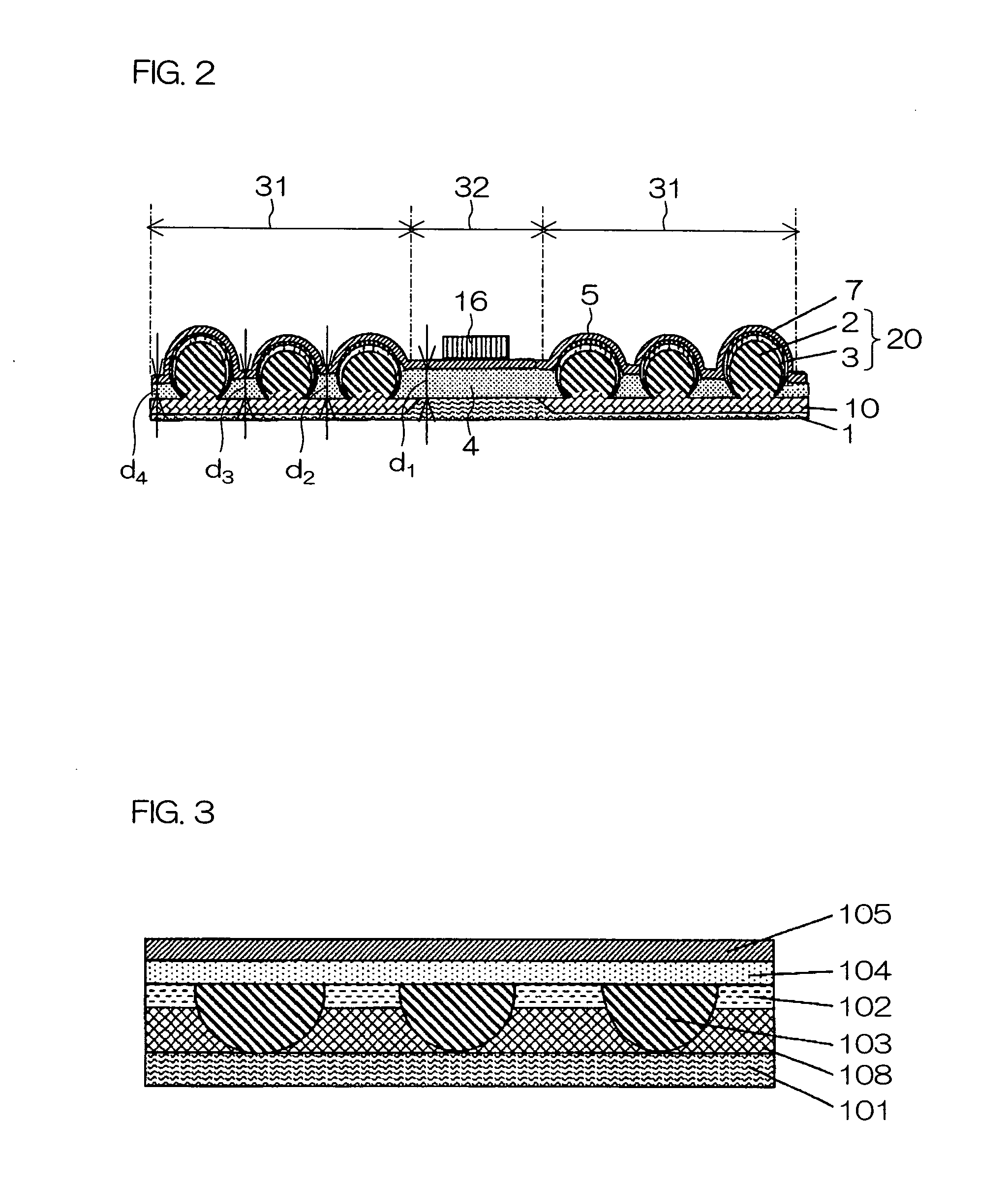Photovoltaic conversion device, its manufacturing method and solar energy system
a technology of photovoltaic conversion and manufacturing method, which is applied in the direction of semiconductor devices, solid-state devices, pv power plants, etc., can solve the problems of reducing photovoltaic conversion efficiency, and achieve the effect of high photovoltaic conversion efficiency
- Summary
- Abstract
- Description
- Claims
- Application Information
AI Technical Summary
Benefits of technology
Problems solved by technology
Method used
Image
Examples
examples
[0121] Next, a first example of the photovoltaic conversion device of the present invention will be described with reference to the photovoltaic conversion device shown in FIG. 1(a) and FIG. 1(b).
[0122] A lot of crystal semiconductor particles 2 as p-type silicon having a particle diameter ranging from 0.3 to 0.5 mm were placed on the substrate 1 made from aluminum in the first regions 31. Subsequently, the crystal semiconductor particles 2 were fixed by applying a certain amount of weight from above and heated in N2—H2 mixture atmosphere at 630° C. for 10 minutes in the fixed state. In this manner, the substrate 1 was joined to the crystal semiconductor particles 2 via the alloy layer 10 of the substrate 1 and the crystal semiconductor particles 2.
[0123] Subsequently, to clean the surface of the crystal semiconductor particles 2, the substrate 1 to which the crystal semiconductor particles 2 are joined was immersed in a mixed solution of hydrofluoric acid-nitric acid having a wei...
PUM
 Login to View More
Login to View More Abstract
Description
Claims
Application Information
 Login to View More
Login to View More - R&D
- Intellectual Property
- Life Sciences
- Materials
- Tech Scout
- Unparalleled Data Quality
- Higher Quality Content
- 60% Fewer Hallucinations
Browse by: Latest US Patents, China's latest patents, Technical Efficacy Thesaurus, Application Domain, Technology Topic, Popular Technical Reports.
© 2025 PatSnap. All rights reserved.Legal|Privacy policy|Modern Slavery Act Transparency Statement|Sitemap|About US| Contact US: help@patsnap.com



